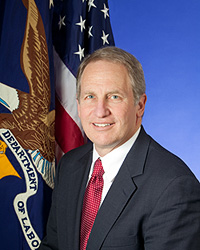Home » occupational disease
Articles Tagged with ''occupational disease''
ACOEM Urges OSHA not to revoke ancillary provisions of beryllium rule
Group says revoking provisions for construction and shipyard sectors puts workers at risk for beryllium disease
September 7, 2017
Inside NIOSH:
Rapid progression of black lung disease highlights need for regular screening
July 20, 2017
OSHA moves to weaken beryllium exposure rule
Changes would apply to construction, shipyard sectors
June 28, 2017
Never miss the latest news and trends driving the safety industry
eNewsletter | Website | eMagazine
JOIN TODAYCopyright ©2024. All Rights Reserved BNP Media.
Design, CMS, Hosting & Web Development :: ePublishing





